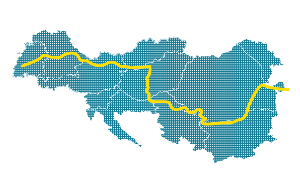Extended producer responsibility legislation for (waste) packaging, electrical and electronic equipment, batteries and accumulators
In recent years, Extended Producer Responsibility (EPR) has been introduced through waste legislation at EU level for a number of expanding waste streams typically found in household i.e. municipal waste.
There is no doubt that existing EU waste legislation has fostered an increase in collection and recycling rates of common, predominantly consumer induced waste streams such as waste packaging, electrical and electronic equipment, batteries and accumulators. Despite improved management and successful implementation of this legislation, it is not a match for the rise in new products, differing in format, material or combinations of materials and formats, which are increasingly more difficult to disassemble, reuse and recycle, by design, which ultimately end in the municipal waste streams.
In waste legislation, EPR schemes represent a set of measures taken by Member States to ensure that producers of products bear financial responsibility or financial and organisational responsibility for the management of the waste stage of a product‘s life cycle.
As a strategy, extended producer responsibility has fallen short of its objective to support better design to improve resource management after the products enter the waste stream, as it does not provide enough incentive for producers, to foster better product design in this regard
Extended producer responsibility has been recognised by the European commission as an opportunity and measure to support better design, innovation and eco-innovation. This should support the transition towards a more sustainable economy, where material resources are kept in the economy as long as possible, through greater product longevity and durability, material and component reuse and recycling and phasing out of disposal, either through landfill or incineration.
The new legislative package, published in the end of May 2018 ( Official Journal of the European Union, L 150, 14 June 2018 ), amending existing waste directives offers some ground rules, which address common problems that have been identified in a number of studies on EPR and the shortcomings of this approach.
The new requirements, which need to be transposed by Member States before the 5th of July 2020, contain many additional stipulations concerning the operation, monitoring, transparency and objectives for EPR schemes, which help producers fulfil their EPR obligations.
A general observation of the EPR systems existing in the Danube region is that the system seems to be less complicated and more straightforward for electrical and electronic equipment, while the approach to packaging EPR systems is more diversified. Eco-design for electronic and electrical equipment is supported by the eco-design directive, which enforces some technical eco-design measures and requirements through its implementation acts. The Waste Electronic and Electrical Equipment (WEEE) directive and the Restriction of Hazardous Substances (RoHS) directive have been reviewed and updated recently, enforcing more unified approaches, which ensure greater consistency and predictability of how the systems work in each member state.
The existing legislation stemming from the packaging (PPW) directive on the other hand seems not to have kept up with the evolving packaging market and rapid development of new materials and packaging solutions. In January 2018, the EU announced a plastics’ strategy to address some of the main environmental issues regarding plastics and plastic packaging. This was followed in the end of May with a proposal for a directive on the reduction of impact of certain plastic products on the environment. Some packaging items are also included in the set of problematic single use products.
Regardless of the implementation date, EPR systems are already evolving to include some of the suggested modifications from the amending waste directives published in May, such as separate registration and coordination points i.e. clearing houses to coordinate and manage the flow of materials and money through the collective, competitive producer responsibility organisations as well as compliance of companies.
As it can still be quite difficult to get adequate information on the workings of individual country schemes our Danube goes Circular platform provides an overview with links to current collective EPR schemes for waste packaging, electrical and electronic equipment as well as batteries and accumulators within the region.
For more information on EPR and EU waste legislation, please refer to our Circular Toolbox!

